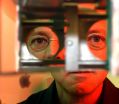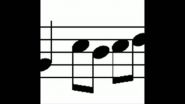Musicians don't just hear in tune, they also see in tune
2015-06-18
(Press-News.org) Musicians don't just hear in tune, they also see in tune.
That is the conclusion of the latest scientific experiment designed to puzzle out how the brain creates an apparently seamless view of the external world based on the information it receives from the eyes.
"Our brain is remarkably efficient at putting us in touch with objects and events in our visual environment, indeed so good that the process seems automatic and effortless. In fact, the brain is continually operating like a clever detective, using clues to figure out what in the world we are looking at. And those clues come not only from what we see but also from other sources," said Randolph Blake, Centennial Professor of Psychology at Vanderbilt University, who directed the study.
Scientists have known for some time that the brain exploits clues from sources outside of vision to figure out what we are seeing. For example, we tend to see what we expect to see based on past experience. Moreover, we tend to see what our other senses tell us might be present in the world, including what we hear. A remarkable example of this kind of bisensory influence is a beguiling visual illusion created by sound: When a person views a single flash of light accompanied by a pair of beeps presented in close succession, the individual incorrectly perceives two flashes, not just one.
"In our study we asked just how abstract can this supplementary information be?" Blake said.
The discovery of Blake and his colleagues that information as abstract as musical notation can affect what we see is reported this week in the Proceedings of the National Academy of Sciences Online Early Edition in an article titled "Melodic sound enhances visual awareness of congruent musical notes, but only if you can read music." Blake's co-authors are Associate Professor of Psychology Chai-Youn Kim and graduate students Minyoung Lee and Sujin Kim from Korea University in Seoul.
To answer their question, the researchers turned to a classical test called binocular rivalry that presents the brain with a clear visual conflict, which it struggles to resolve. The binocular rivalry effect is created by presenting incompatible images separately to each eye. Evidently, the brain can't settle on a single image because the viewer's perception fluctuates back and forth between the two images every few seconds.
In their study, the researchers presented participants with an array of moving contours in one eye and a scrolling musical score in the other. Participants pressed one button when seeing the contours and another button when seeing the musical score. As expected perception switched back and forth between the conflicting possibilities, with each view being perceptually dominant for roughly the same length of time.
Next the researchers played a simple melody through the headphones that their subjects wore as they performed the task. When they heard the music, the participants reported that they tended to spend more time watching the visual score and less time watching the moving contours.
For non-musicians it didn't matter whether or not the melody being played matched the musical score that they were viewing. But the people able to read music reported watching the visual score for longer periods when the melody they were hearing was identical to the melody they were viewing than they did when the two were different.
A second key finding in the study was that the influence of the audible melody on the predominance of the visual score disappeared during the periods when the moving contours were dominant. The researchers found that playing the melody prolonged the periods when the musical score dominated a person's perception but it did not cut short the periods when the moving contours were predominant. In other words, the musical melody and visual melody appear to be temporarily uncoupled when the visual member of the pair is temporarily erased from awareness.
"What this tells us is that the kind of information the brain uses to interpret what we see around us includes abstract symbolic input such as music notation," said Blake. "However, this kind of input is only effective while an individual is aware of it."
INFORMATION:
The research was funded by National Research Foundation of Korea grants NRF-2013R1A1A1010923 and NRF-2013R1A2A2A03017022 and National Institutes of Health grant P30-EY008126.
[Attachments] See images for this press release:


ELSE PRESS RELEASES FROM THIS DATE:
2015-06-18
A trio of studies being published today in the journals Science and Cell describes advances toward the development of an HIV vaccine. The three study teams all demonstrated techniques for stimulating animal cells to produce antibodies that either could stop HIV from infecting human cells in the laboratory or had the potential to evolve into such antibodies. Each of the research teams received funding from the National Institute of Allergy and Infectious Diseases (NIAID), part of the National Institutes of Health.
In one study, published in Science, researchers demonstrate ...
2015-06-18
CHAPEL HILL, NC - Before there were cells on Earth, simple, tiny catalysts most likely evolved the ability to speed up and synchronize the chemical reactions necessary for life to rise from the primordial soup. But what those catalysts were, how they appeared at the same time, and how they evolved into the two modern superfamilies of enzymes that translate our genetic code have not been understood.
In the Journal of Biological Chemistry, scientists from the UNC School of Medicine provide the first direct experimental evidence for how primordial proteins developed the ...
2015-06-18
Parkinson disease (PD) appeared associated with 16 types of cancer in a study in Taiwan, an effort to explain the association in an East Asian population because most prior research has been conducted in Western populations, according to an article published online by JAMA Oncology.
During the past 50 years, more than 25 epidemiological studies have been conducted on the association between PD and cancer, and most of those studies showed that individuals with PD had a decreased risk of cancer compared to those without PD. However, most of those studies were done in Western ...
2015-06-18
A survey carried out earlier this year has found the first evidence of the 'superbug' bacteria Methicillin-Resistant Staphylococcus aureus (MRSA) in sausages and minced pork obtained from supermarkets in the UK. However, researchers stress that this does not pose a significant immediate risk to the public.
In February, a team of researchers funded primarily by the Medical Research Council (MRC) bought and analysed a total of 103 (52 pork and 51 chicken) pre-packaged fresh meat products, labelled as being of UK farm origin, from supermarkets in five different locations ...
2015-06-18
PITTSBURGH, June 17 -- Regardless of chronological age, people who live in neighborhoods with high crime, noise and vandalism are biologically more than a decade older than those who do not, according to a study led by researchers from the University of Pittsburgh. The findings were published online today in PLOS One.
Strong research evidence supports that living in disadvantaged neighborhoods has an unfavorable impact on mental and physical health, explained lead author Mijung Park, Ph.D., M.P.H., R.N., assistant professor, University of Pittsburgh School of Nursing. ...
2015-06-18
High in the sky where the cirrus ice crystal clouds form, jet contrails draw their crisscross patterns. Now researchers have found that these elevated ice cloud trails can influence temperatures on the ground and affect local climate, according to a team of Penn State geographers.
"Research done regarding September 2001, during the three days following 9-11 when no commercial jets were in the sky, suggested that contrails had an effect," said Andrew M. Carleton, professor of geography. "But that was only three days. We needed to look longer, while jets were in the air, ...
2015-06-18
Scientists at UCL have observed how a widespread polar wind is driving gas from the atmosphere of Saturn's moon Titan. The team analysed data gathered over seven years by the international Cassini probe, and found that the interactions between Titan's atmosphere, and the solar magnetic field and radiation, create a wind of hydrocarbons and nitriles being blown away from its polar regions into space. This is very similar to the wind observed coming from the Earth's polar regions.
Titan is a remarkable object in the Solar System. Like Earth and Venus, and unlike any other ...
2015-06-18
(WASHINGTON, June 18, 2015) - New research published online today in Blood, the Journal of the American Society of Hematology (ASH), concludes that a blood clot in an abdominal vein may be an indicator of undiagnosed cancer. The study also suggests that these clots predict poorer survival in patients with liver and pancreatic cancer.
Compared to the general population, individuals who develop blood clots in their legs (deep-vein thrombosis, or DVT) or lungs (pulmonary embolism, or PE) are two to four times more likely to be diagnosed with cancer within the next year. ...
2015-06-18
Global warming leads to the ice sheets on land melting and flowing into the sea, which consequently rises. New calculations by researchers from the Niels Bohr Institute show that the sea level in Northern Europe may rise more than previously thought. There is a significant risk that the seas around Scandinavia, England, the Netherlands and northern Germany will rise by up to about 1½ meters in this century. The results are published in a special issue of the scientific journal Climate Research.
Sea level rise is a significant threat to the world's coastal areas, ...
2015-06-18
Astronomers making a detailed, multi-telescope study of a nearby galaxy have discovered a magnetic field coiled around the galaxy's main spiral arm. The discovery, they said, helps explain how galactic spiral arms are formed. The same study also shows how gas can be funneled inward toward the galaxy's center, which possibly hosts a black hole.
'This study helps resolve some major questions about how galaxies form and evolve,' said Rainer Beck, of the Max-Planck Institute for Radio Astronomy (MPIfR), in Bonn, Germany.
The scientists studied a galaxy called IC 342, some ...
LAST 30 PRESS RELEASES:
[Press-News.org] Musicians don't just hear in tune, they also see in tune




